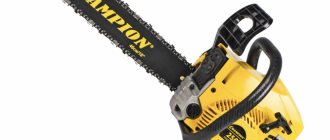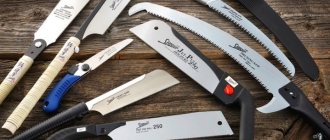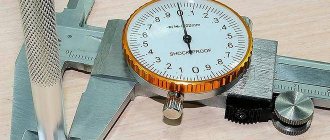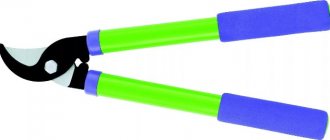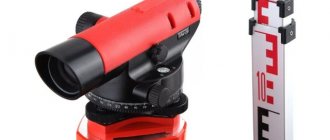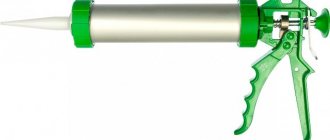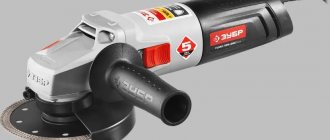A jigsaw is essentially a universal tool that allows you to make straight and shaped cuts in a wide variety of materials - from soft wood to steel and glass. However, the tool itself is universal, but not its equipment: each task requires a certain type of saw blade. To understand how to choose jigsaw files in each specific case, you need to figure out what criteria to use when choosing, how some blades differ from others, and how to guess this from their markings. When you come to the store and look at the counter with jigsaw files, you will find that they are all very different. They differ not only in the length, width and thickness of the blade, but also in the size of the teeth, the geometry of the cutting edge and the type of tail. In this material we will look at what types of jigsaw files there are, their features and selection parameters.
Types of jigsaw blade shanks
The first thing you should pay attention to when choosing a jigsaw file is the type of shank. And this is logical: if your tool is not designed to work with this variety, then you simply will not be able to use the new blade. There really aren't that many options:
T-shank.
It is often called “Boschevsky”, since it was this company that developed files with this type of shank. Since BOSCH is the market leader in jigsaws and accessories for them, and other industry giants are trying to switch to this standard, it is not surprising that T-shank files are currently the most common. The T-shank fits most modern jigsaws - Bosch, Makita, Metabo, Hitachi, Skil, AEG, DeWalt, Sparky, Interskol, etc.
U-shaped shank.
The second most popular type of shank is the American standard. This is a universal shank for older models of jigsaws Skil, DeWalt, Wolf, Ryobi, Stayer, Black&Decker, etc. These files are suitable for all jigsaws with block and screw clamps.
Makita shank.
Files with this shank are only compatible with older Makita jigsaw models.
Bosch shank.
It differs from the T-shank only in the presence of a second stop.
These files are only suitable for older Bosch models. The last two types of shanks can already be classified as rarities. Finding such files in domestic stores today is almost impossible.
Homemade files
Blades for a manual jigsaw for wood can have different tooth shapes and the frequency of their arrangement. Different manufacturers offer standard file shapes, so craftsmen are constantly busy looking for new solutions both in order to save money on ready-made jigsaw attachments and to improve the quality of their work.
We will look at 2 master classes on making different files for a hand jigsaw.
Option 1. Regular serrated blade
The blade blade often breaks during operation, which significantly complicates the process of manufacturing products from different materials. The cost of high-quality canvas can be very high (from 50 rubles per piece). Cheaper products are made from weak metal. To solve the problem and reduce the cost of jigsaw attachments, craftsmen figured out how to make a blade with teeth on their own.
For work you will need:
- strong wire of large diameter;
- forging plant;
- hammer;
- drill with attachments.
Procedure:
- To begin with, take a regular jigsaw blade and cut the wire along its length; you can make a small margin for ease of work.
- Using the anvil, we beat the wire with the blunt side of a hammer until it becomes a flat strip. Do not flatten the metal too much; we try to maintain the usual thickness of the finished file by eye.
- You can put the finished strip into a jigsaw. We clamp it into the tensioners like a regular file.
- We take a drill with a diamond blade and cut the teeth with the required frequency and size. The hand should move confidently, observing the chosen step.
The homemade product is ready to work. A description of this process is presented in the video.
File sizes
Canvas length.
The length of the saw blade can vary over a fairly wide range - from 40 to 250 mm. The longer the file, the thicker the workpiece it can cut. It should be borne in mind that the actually achievable depth of cut depends not only on the length of the blade, but also on the capabilities of the tool itself.
For sawing thin materials, it is better to use short files: their use guarantees a neat, clean cut, because the process is not hampered by the deformation of an excessively long canvas.
Web width.
The width of the blade is selected depending on the type of operations that are supposed to be performed using a jigsaw. Wide saw blades are ideal for straight cuts: they are easier to guide in a given direction, which means the cut line is smooth.
For curly cuts, on the contrary, you need a blade with a narrow back, which makes it easier to perform various maneuvers, “drawing” smooth curves.
Thickness of the canvas.
And finally, the thicker the file, the less it will deviate from the vertical position during operation, i.e. the cut along its entire length will be perpendicular to the surface of the material. However, in pursuit of a neat cut, do not forget that too thick files may not fit jigsaws with a quick-release mechanism.
Canvas dimensions
The capabilities of jigsaw blades are determined not only by the size and shape of the cutting edge. The geometric characteristics of the canvas itself also affect the speed and quality of work. Plus, its dimensions must be selected based on the type and dimensions of the material being processed.
Length
The lengths of jigsaw blades are in the range of 40–250 mm. When choosing a specific length of a jigsaw file, you need to take into account the thickness of the material in the work. It is clear that to cut thick wooden workpieces you need a long saw blade for a wood jigsaw. But if you cut thin sheet materials with a long blade, then due to the possible bending of the metal, it is difficult to obtain an even cut.
Note! When working with long blades, you should understand that the working depth of the cut is affected by the power of the jigsaw.
Width
You need to select the width of the saw blade based on the type of work to be done. For simple sawing, where a straight and even edge is required, wide files are taken. A narrow blade may move during operation, and a straight cutting line will not work.
But when cutting out shapes of varying degrees of complexity, you need to choose narrow jigsaw blades. It is easier to direct them to the side, drawing curved lines.
Thickness
For sawing thin sheet materials, the thickness of the file does not matter much. But when working with thick workpieces, this size affects the quality of the sawn surface. Thin blades will deviate from the perpendicular line during operation, and the cut will be uneven. The thicker the blade, the more even the cut it provides. But there is one caveat - too thick a blade is not suitable for all models of jigsaws. Jigsaws equipped with quick-release devices may not be suitable for thick blades.
Types of files according to cutting edge geometry
If you look closely at jigsaw files, you will notice that they all differ in the size of the teeth set and the geometry of the sawing edge. The more the teeth are set apart, the wider the cutting line will be, which increases the speed of work, although at the cost of reducing the quality of the cut. Not only the cleanliness of the cut depends on the wiring method, but also what materials this equipment can be used for working with.
Milled with classic layout.
Peculiarities.
In files with a classic setting, the teeth are alternately bent in different directions, like in ordinary hand hacksaws. This arrangement helps reduce the heating of the saw during operation, since the blade experiences almost no friction in a fairly wide cut. It is almost impossible to get a neat cut with such a file, but the work speed will be high.
Purpose.
The purpose of saw blades with milled teeth and classic settings is to quickly cut hard and soft wood, as well as plastic and non-ferrous metals.
Milled with wavy layout.
Peculiarities.
In equipment with such a layout, the teeth do not change direction one by one, as in the previous case, but in groups of several pieces. Moreover, each tooth has a different deviation from the central axis than its closest neighbors - the working edge of the saw blade forms a wave.
Purpose.
The purpose of saw blades with wavy layout is to make a clean cut not only on wood, but also on chipboard or plywood, as well as working with non-ferrous metals and plastic.
Polished with classic layout.
Peculiarities.
The teeth of such blades are set apart and undergo a grinding process. The cutting line of such blades is quite wide.
Purpose.
Saw blades with ground teeth, set in a classic way, are designed for quick but relatively clean cutting of wood and its derivatives - chipboard, fiberboard, etc.
With conical grinding without routing.
Peculiarities.
The blades of such saws do not have a tooth spread, but their segments are ground, which ensures a thin cutting line and an even cut.
Purpose.
Allows for accurate cutting of wood, laminate, and polymer materials.
Classification of jigsaw files by type of material being processed
For wood and wood materials
Initially, the jigsaw was created to work exclusively with wood.
Modern tools have learned to cut both metal and plastic, but their main purpose is still cutting wood and its derivatives. That is why most of the range of saw blades is designed to work with these materials. “Wooden” files are divided into groups according to the type of work for which they are intended. Quick cut
When carrying out certain types of work with wood, it is often not accuracy that is important, but the speed of the process. Saw blades for quickly cutting wood can provide high productivity. They are easy to recognize by the following characteristic features:
- long blade (from 60 mm),
- large teeth (up to 6 mm),
- large amount of separation (about 1 mm).
Tip: For sawing wood across the grain, blades with straight teeth are also suitable, but for longitudinal cuts, saws with oblique teeth are more suitable.
Clean cut
Operations such as cutting furniture panels from chipboard or trimming parquet boards require a smooth and accurate cut. When solving such problems, where the quality of work comes to the fore, rather than productivity, clean cutting blades are used that have:
- average tooth size (no more than 3 mm),
- minor divorce.
Most files have teeth pointing towards the jigsaw.
To ensure that the front side of the material after cutting chipboard or laminate is as neat as possible, without chips or burrs, the workpiece is placed with the back side facing you/the tool. To cut from the “face”, you need to use a blade with a reverse tooth. True, it is more difficult to work with this type than with a regular one - you have to overcome the force of pushing out the tool. Tip: A special saw with two rows of teeth allows you to cut panels laminated on both sides carefully, without chipping.
Figured cut.
It is almost impossible to cut a curve with a small radius with a regular wide blade. For figured cutting, specialized files are used, which, due to their size, easily pass rounded areas:
- narrow blade (no more than 4 mm),
- small teeth (up to 2 mm),
- short length (up to 40 mm),
- beveled back side.
Make your own file
For a true craftsman with an equipped workshop, it is indecent to spend money on buying simple consumables that you can make yourself. In this case, the only thing that plays a role is the time that has to be paid in exchange for regular currency. Below, we have presented 2 options for creating a homemade file for a hand jigsaw. The video presented in each option will tell you about the process in more detail. We will describe the required tools and the main stages of production.
From a tin can
The following tutorial demonstrates the process of creating a spiral file from a regular tin can.
Such a product will help save your budget, since the average price of such paintings is 35 rubles per piece. What you will need:
- Metal tin can
- Metal scissors
- Clothespins (2 pcs)
- Pliers (2 pcs)
- Small anvil
- Hammer
Manufacturing process:
- Cut the tin can into long strips 1-2 mm wide.
- We clamp the resulting strips into clothespins from the edges and twist them into a spiral until a fine thread is obtained.
- We remove the clothespins and, holding the product in pliers on both sides, pull it out slightly.
- To give greater strength, place the future file on the anvil and lightly tap it until a flat shape is obtained.
- We cut off the excess length, then insert it into the jigsaw and use it.
The specified tools and work techniques can be changed at your discretion and improvisation. A more detailed process is demonstrated in the video below.
For metal
It must be admitted that a jigsaw is not very suitable for cutting metal: the tool can hardly cope with the load, the process is very slow, and the files quickly become dull.
However, sometimes this extreme method is justified. Metal files differ from wood files: they are made of especially strong steel and have small (up to 1 mm) teeth, set in a wave-like manner. If you often use a jigsaw and at the same time perform a wide variety of work with it, we recommend keeping three metal blades on hand at once - separately for aluminum, other non-ferrous metals and steel. If you have to cut metal only from time to time, it will be enough to have only a steel file - it will certainly cope with cutting non-ferrous metal products.
Classification and types of files for manual sawing with a jigsaw
Having a convenient and structurally reliable manual jigsaw for wood on hand is not even half the success, since depending on the type of work to be done, it is also necessary to decide on the optimal set of replacement equipment. Hand jigsaw files are not considered universal tools, and each of their designs is designed to perform certain woodworking operations:
- Based on the quality and speed of cutting, saw blades are distinguished between rough and fine sawing. The first ones have teeth large enough for jigsaws, and are designed for quick cutting along a straight or simple contour. The tooth pitch of such saws is larger, which means they also leave large chips behind. The cut line is subject to subsequent grinding. Using saws for finishing cutting, you will have to work longer, but the quality of the cut will be better, since the tooth pitch is small and the resulting chips are small.
- According to the profile of the base of the blade, flat and twisted files for a manual jigsaw are distinguished. Straight saw blades are the most commonly used configuration, although the teeth can be positioned differently. For example, files with missing teeth have approximately twice the pitch and, therefore, are better cooled. An option for this type of tool is saw blades with double teeth, which provide additional improvement in the quality of the cut. Twisted wood files allow you to place the teeth in different planes, which has a positive effect on the quality of the cut.
- The shape of the teeth for jigsaw files is standardized depending on the thickness of the source material. There are 12 numbers in total - from No. 0, intended for working with particularly thin workpieces (2.5...3 mm thick), to No. 12, capable of making cuts on workpieces 15...20 mm thick. The teeth are also distinguished by pitch and angle of inclination, as well as by its direction. Finally, for trimming the ends of the workpiece, saws with adjacent adjacent teeth are used, which reduce the number of possible chips that are inevitable when working with hardwood.
- Based on the relative arrangement of the teeth on the base, straight, round and spiral wood saws are distinguished. The purpose of the former has already been described above. The difference between round files and spiral files is that in round files a number of teeth are located discretely along the length of the tool, and in spiral files - continuously along the generatrix. This affects the technology of their use - round files allow you to make a deeper cut, but they put more strain on the hands of the person working with a direct feed of the jigsaw. Spiral cut wood almost constantly, although with less depth. The quality of the dividing line will be better.
- Based on the material, a distinction is made between files made of alloy tool steel, for example, 12X or 4XC, and those made from ordinary carbon tool steel of type U7, but with diamond coating on the working surface. Less commonly used for woodworking are saw blades coated with tungsten carbides: although they have increased hardness, they are very sensitive to bending stress. The price of diamond or carbide coated files is much higher than regular ones.
For polymer materials
For cutting pipes and other PVC products, blades with large teeth designed for cutting wood or metal are suitable.
Fine-toothed saw blades will also cope with the task, but you will have to cut at a minimum speed, otherwise the plastic sawdust softened by the high temperature will clog the saw teeth. For thin sheets of plastic and plexiglass, metal blades with fine teeth are excellent. To cut thick plastic, you can take a wood saw and cut at low speed.
For specific tasks
Files intended for glass and ceramics are made of particularly strong alloys and have a diamond coating on their cutting edge or, more often, a tungsten carbide coating. Using a jigsaw to cut ceramic tiles or glass only makes sense if you need to cut out shaped elements; There are other, more suitable tools for direct cutting of these materials.
Drywall and other building materials containing abrasive particles of gypsum, cement or sand quickly dull any saws. The exception is saw blades designed specifically for these materials with carbide tips on the cutting edge.
A file designed for cutting cardboard, rubber and other soft materials is more like a knife. It is “toothless”, and its cutting edge is made in the form of polished waves.
How to decipher the file markings
Determining the purpose of a file solely by its appearance is by no means an easy task; this requires experience. For those who do not have enough such experience, we recommend that you focus primarily on the markings on the canvas, which contain all the necessary information. There is no uniform standard for marking saw blades, but most manufacturers try to adhere to the Bosch classification.
#1. On the tail of each file there is a set of numbers and letters.
The first letter indicates the type of shank, such as T-shape or U-shape. It is followed by a number, the size of which can be used to judge the length of the canvas:
- 1 – short (up to 75 mm),
- 2 – standard (75-90 mm),
- 3 – extended (90-150 mm),
- 7 – long (more than 150 mm).
The purpose of the file is encrypted in the second and third numbers.
We will not decipher them, since this information is duplicated on files in other forms that are more accessible to understanding and memorization. After the numbers there is another letter - it indicates the size of the teeth:
- A – small (for cutting laminate),
- B - medium (for sawn wood, plywood, fiberboard, chipboard, etc.),
- C and D – large (for rough cuts).
And finally, the last letter will help you get additional information about the file:
- F – bimetallic sheet (considered the strongest and most durable),
- O – narrow blade (for figured cutting),
- P – thick blade (allows sawing strictly perpendicular to the surface),
- R – with reverse tooth,
- X – with variable tooth size (universal blade, suitable for cutting any materials).
#2. The purpose of the file can be determined by the color of the shank:
- gray – for wood,
- blue – for metal,
- white – for wood and metal,
- red – for plastic,
- black – other materials.
#3. The purpose of the saw blade is determined primarily by the grade of steel from which it is made.
The letter designation of the steel grade can be found on the neck of the file, i.e., on the border of the shank and the blade itself:
- CV – chrome vanadium steel (for wood and wood boards),
- HCS – high carbon steel (for wood and wood-based panels, as well as plastic),
- HSS – high-speed steel (for ferrous and non-ferrous metals),
- HM – hard alloy based on tungsten carbide (for ceramics, fiberglass, etc.)
BM (or BIM, or Bi-Metal) is a highly elastic combination of HSS and HCS (professional saw blades for wood and metal).
#4. The purpose of the file is also indicated by the marks on the canvas itself:
- Wood – for soft wood and fiber boards,
- Hardwood – for hardwood and laminated panels,
- Inox – for stainless steel,
- Alu – for aluminum,
- Metal – for sheet metal, metal profiles and pipes,
- Fiber&Plaster – for fiberglass,
- Soft-material – for soft materials (rubber, foam, cardboard, etc.),
- Acrylic – for polycarbonate and plexiglass.
#5. Sometimes there is also an inscription on the canvas specifying the type of work:
- basic – standard blades for high-quality cuts,
- speed – saw blades for fast cutting,
- clean – blades for clean cutting (without setting teeth),
- progressor – universal files with variable tooth sizes,
- flexible – blades with wavy layout for cutting metal,
- special – saws for cutting ceramics, plastic and other highly specialized work.
